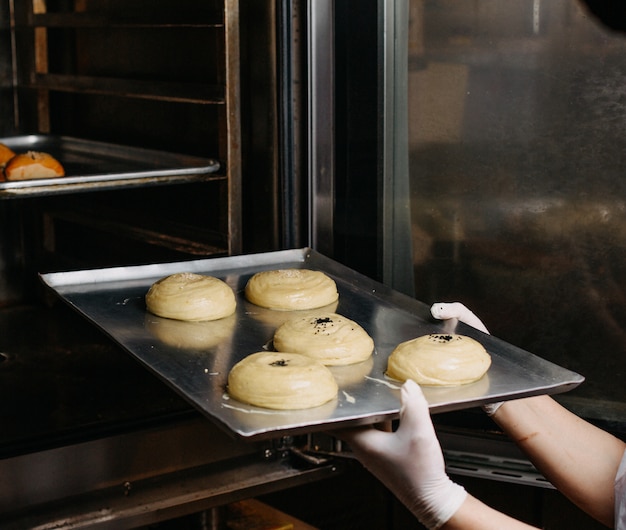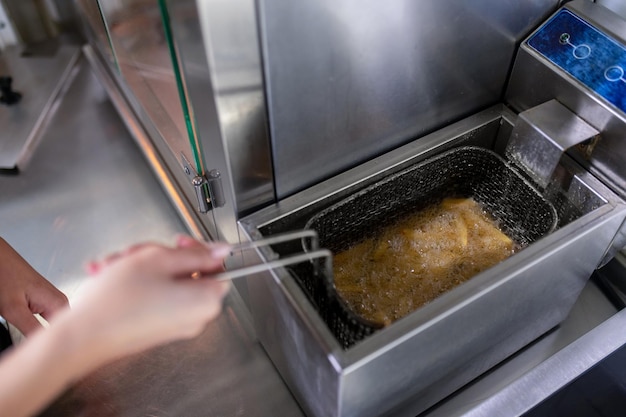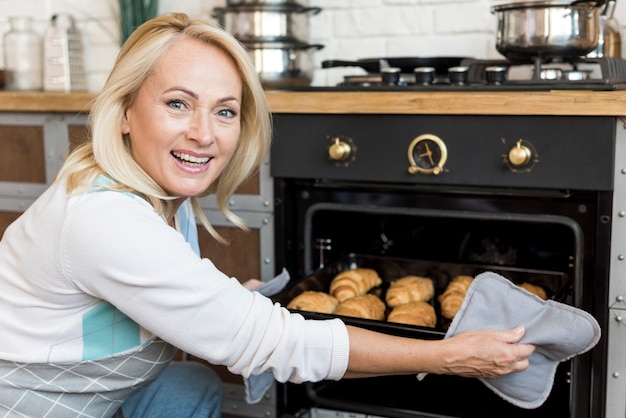Let’s face it, sometimes you just crave a simple, comforting potato, but who wants to wait around for an oven to preheat? That’s where the trusty microwave comes in! I’ve been a firm believer in the power of microwaved potatoes for years, and I’m here to tell you it’s not just about speed (though that’s a huge plus). It’s about achieving that perfectly cooked, fluffy potato with minimal fuss.
In this guide, we’ll delve into the world of microwaving spuds, uncovering the best techniques, common pitfalls to avoid, and even some sneaky tricks to elevate your potato game. By the end, you’ll be a microwave potato pro, ready to conquer those cravings with confidence.
(Part 1) The Science of Spud-Microwaving: More Than Just Pressing Start

Don’t think of microwaving a potato as a mindless task, it’s actually a mini science experiment! The microwave uses electromagnetic radiation to heat the water molecules inside the potato, causing them to vibrate and generate heat. This is why a potato needs moisture to cook properly.
The Key Factors: Size, Shape, and Moisture
Size, shape, and moisture content play a crucial role in how your potato cooks. A small, compact potato will cook much faster than a large, elongated one. Similarly, a potato that’s full of moisture will cook more evenly than a dry one. Think about a new potato versus a russet – the new potato will likely need less time and will be less prone to drying out in the microwave.
For larger potatoes, adjust the cooking time accordingly. You might even need to pierce the potato a few times with a fork to help steam escape and prevent it from exploding in the microwave (don't worry, we've all been there!). If you’re using a potato that’s a bit on the dry side, you can add a small amount of water to the container it’s cooking in. It’s all about finding that sweet spot where the potato cooks evenly and doesn’t turn into a leathery mess.
Understanding the Temperature
When a potato reaches around 160°F (71°C) in the middle, it’s considered cooked. At this point, the starch molecules start breaking down, and the potato becomes tender. Now, a microwave doesn’t exactly have a built-in thermometer, so we’re relying on our senses (and a bit of experience) to know when it’s ready. But don't worry, we'll cover how to check for doneness later on.
(Part 2) The Equipment: Getting the Right Tools for the Job

Now that you’ve got your potatoes, let’s talk tools. You don’t need a fancy kitchen gadget arsenal, just a few essential items:
- Microwave-Safe Container: This is crucial, you want a container that can handle the heat and won't melt or warp in the microwave. I tend to use a glass bowl or a ceramic dish. It’s also good to choose a container that’s the right size for your potatoes, so they’re not overcrowded and can cook evenly.
- Fork or Skewer: This is for poking holes in the potato, which helps it cook more evenly and prevents explosions. I always use a fork because it’s handy to use for turning the potato later.
- Timer: A timer is essential for keeping track of the cooking time. It’s easy to lose track of time in the kitchen, and you don’t want to end up with a burnt potato! I usually just set a timer on my phone, but you can use a kitchen timer too.
- Damp Paper Towel (Optional): For a faster and more even cooking, you can wrap the potato in a damp paper towel. This helps trap steam and keep the potato moist. It’s especially helpful for smaller potatoes.
(Part 3) Preparing the Potatoes: A Few Steps to Success

Okay, you’ve got your potatoes and your gear, now let’s get them ready for the microwave:
1. Wash and Scrub
Start by giving your potatoes a good wash to remove any dirt or debris. I usually use a vegetable brush to give them a thorough scrub – you’d be surprised how much dirt can be hiding in those crevices!
2. Prick Those Potatoes
This is crucial to avoid a microwave explosion. Use a fork or skewer to make a few holes in the potato, allowing steam to escape. Don't be shy, make those holes generous! The more holes, the less chance of a messy microwave situation.
3. Consider Wrapping: Boosting Moisture and Speed
For smaller potatoes, wrapping them in a damp paper towel can significantly improve the cooking process. It traps steam, keeps the potato moist, and helps it cook faster. Think of it as creating a mini steam bath for your potato!
(Part 4) microwave cooking Time: A Guide to Success
Alright, we’re ready to cook! The cooking time will vary depending on the size, type, and moisture content of the potato, and even the wattage of your microwave.
General Guidelines
Here are some general guidelines for cooking potatoes in the microwave:
| Potato Type | Size (approx) | Microwave Time (min) |
|---|---|---|
| small potatoes (like new potatoes) | 2-3 inches in diameter | 4-6 minutes |
| Medium Potatoes (like maris piper) | 3-4 inches in diameter | 6-8 minutes |
| Large Potatoes (like king edward) | 4-5 inches in diameter | 8-10 minutes |
Remember, these are just guidelines. Start with the minimum time and check the potato for doneness. If it’s not quite cooked through, add a minute or two and check again. Keep an eye on things, you don’t want to end up with a burnt potato!
(Part 5) Checking for Doneness: Don’t Be Afraid to Test
You’ve microwaved your potato, now it’s time to see if it’s ready for its close-up. Here’s how to check for doneness:
- Use a Fork: Carefully insert a fork into the potato. If it slides in easily, the potato is done. If it meets resistance, it needs a bit more time.
- Press Gently: Gently press on the potato. If it’s soft and gives a bit, it’s done. If it’s still firm, it needs more time.
- Cut a Slice: If you’re unsure, cut a slice into the potato. If the flesh is white and opaque, it’s done. If it’s still translucent, it needs more time.
Don’t be afraid to experiment and find what works best for your potatoes and your microwave. It’s all about practice!
(Part 6) The Art of Resting: Let Those Potatoes Chill
After you’ve taken those potatoes out of the microwave, resist the urge to dig in right away. Allow them to rest for a few minutes. This will give the steam a chance to distribute evenly throughout the potato, resulting in a more tender and flavorful potato. It’s like letting a steak rest – just for potatoes.
(Part 7) Serving Up Perfection: Getting Creative with Your Spuds
Now that your potatoes are cooked to perfection, it’s time to unleash your culinary creativity!
Classic Potato Dishes: A Few Go-To Recipes
There’s no shortage of delicious ways to enjoy your microwaved potatoes. Here are a few classic recipes to get you started:
- mashed potatoes: Peel the potatoes, mash them with butter and milk, and season with salt and pepper. A classic for a reason. You can add a bit of cream cheese or sour cream for extra richness.
- baked potatoes: Cut the potato in half, top with cheese, sour cream, chives, bacon, and more. A simple yet satisfying meal. Don't forget a sprinkle of paprika for a vibrant touch.
- potato salad: Dice the potatoes, combine them with mayonnaise, mustard, celery, and your favorite seasonings. A cool and refreshing dish perfect for summer. Adding a bit of chopped onion or a touch of dill can elevate the flavor.
Beyond the Basics: Exploring New Flavors
Don’t be afraid to get creative! Here are a few ideas to spice things up:
- Roasted Potato Skins: Scoop out the flesh, bake the skins, and fill them with your favorite toppings. A fun and delicious appetizer. Try crumbled bacon, cheddar cheese, and sour cream for a classic combination.
- Potato Hash: Dice the potatoes, cook them with onions, peppers, and spices. A hearty and satisfying meal. Add a touch of smoked paprika or cumin for a smoky flavor.
- potato soup: Purée the potatoes with broth, cream, and your favorite spices. A comforting and satisfying soup. Add a dollop of yogurt or sour cream for a creamy touch.
(Part 8) Microwave Potato Fails: Lessons Learned
We’ve all been there – the burnt potato, the undercooked potato, the microwave explosion. Kitchen disasters that leave you feeling defeated. But fear not! Here are some common mistakes to avoid:
1. Overcrowding the Microwave
Just like you wouldn’t cram a bunch of people into a tiny room, you don’t want to crowd your potatoes in the microwave. Give them space to cook evenly. If you’re cooking more than one potato, make sure they’re not touching.
2. Forgetting to Prick Those Potatoes
It happens to the best of us, forgetting to prick those potatoes is a recipe for disaster. Those potatoes will build up steam, and that steam needs a way out. If you forget to prick them, they’ll explode. Trust me, it’s not pretty.
3. Not Checking for Doneness
Don’t just assume your potatoes are done after the allotted time. Check them! A quick poke with a fork will tell you if they’re ready. And remember, it’s always better to undercook than to overcook. You can always pop them back in the microwave for a bit longer if needed.
(Part 9) FAQs: Your Microwave Potato Questions Answered
You’ve got questions, I’ve got answers. Here are some common questions about microwaving potatoes:
1. Can I microwave a potato whole?
Yes, you can microwave a potato whole. Just be sure to prick it a few times to let the steam escape. But I find that cutting the potato in half or into quarters can help it cook more evenly and reduce the cooking time. It also makes it easier to check for doneness.
2. How can I tell if a microwave potato is cooked?
The best way to tell if a potato is cooked is to insert a fork into the center. If it slides in easily, the potato is done. You can also gently press on the potato. If it’s soft and gives a bit, it’s done. If you’re still unsure, cut a slice into the potato. If the flesh is white and opaque, it’s done. If it’s still translucent, it needs more time.
3. What if my potato explodes in the microwave?
Don’t worry, it happens to the best of us! If your potato explodes, it’s probably because you didn’t prick it enough. Next time, make sure you make plenty of holes. And remember, it’s better to be safe than sorry! Also, check the potato for any signs of damage before microwaving it, a damaged potato is more likely to explode.
4. Can I microwave frozen potatoes?
Yes, you can microwave frozen potatoes. Just make sure to add a few minutes to the cooking time. The potatoes will need more time to cook through because they’re frozen. And be sure to prick them with a fork to help them cook evenly. You might also want to consider defrosting them partially before microwaving for better results.
5. Can I microwave potatoes with other ingredients?
Yes, you can microwave potatoes with other ingredients. For example, you can add onions, peppers, garlic, herbs, or spices to your potato dish. Just make sure you use a microwave-safe container and be careful not to overcrowd it.
(Part 10) The Final Word: Microwave Potatoes: A Delicious and Convenient Option
There you have it, folks! My comprehensive guide to microwave potato cooking. From the science behind it to tips and tricks for perfection, you’re now equipped with the knowledge to whip up delicious and perfectly cooked potatoes in no time. Remember, it’s all about practice and finding what works best for you.
So go forth, my fellow potato lovers, and embrace the wonders of the microwave. It's a kitchen essential for those busy evenings when you need a delicious and satisfying meal in a hurry. And remember, the possibilities are endless when it comes to cooking those wonderful spuds!
Everyone is watching

Corn on the Cob: The Ultimate Guide to Perfectly Cooked Ears
Healthy MealsAh, corn on the cob. Just the name evokes images of sunny days, barbecues, and that sweet, juicy flavour that ...

Perfect Pork Roast Oven Cooking Time: A Guide to Delicious Results
Healthy MealsThere's something truly satisfying about a perfectly roasted pork. The aroma alone is enough to make your mout...

Ham Cooking Time: How Long to Bake, Smoke, or Boil a Delicious Ham
Healthy MealsAh, ham. It's a classic, isn't it? A real crowd-pleaser, especially around holidays. And when done right, it'...

Scallops: The Ultimate Guide to Perfect Cooking
Healthy MealsAh, scallops. Those delicate, sweet, and utterly delicious morsels of the sea. They hold a special place in my...

Spaghetti Squash: The Ultimate Guide to Cooking and Serving
Healthy MealsRemember that time you saw spaghetti squash at the supermarket, looking all bumpy and strange, and thought, "W...
